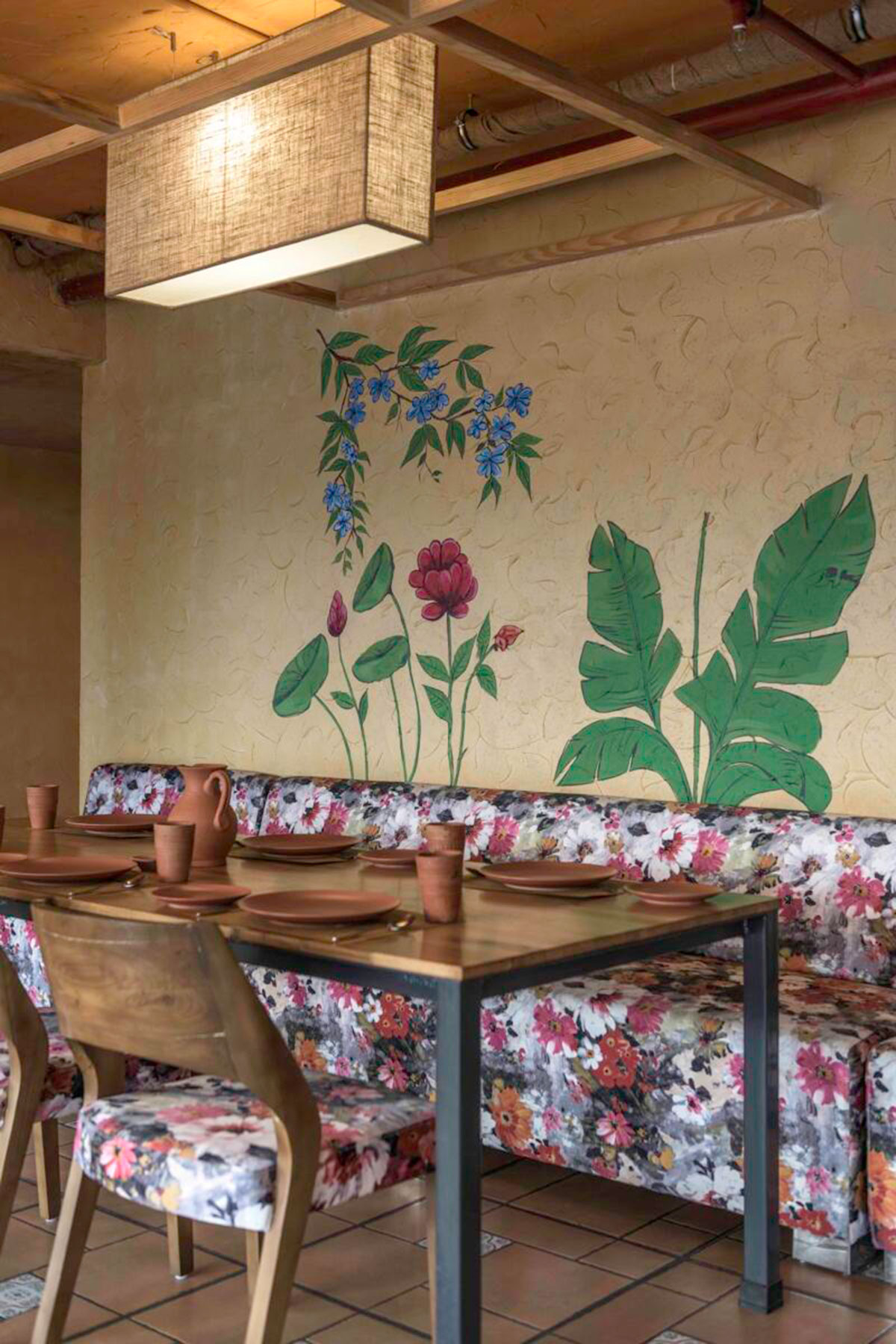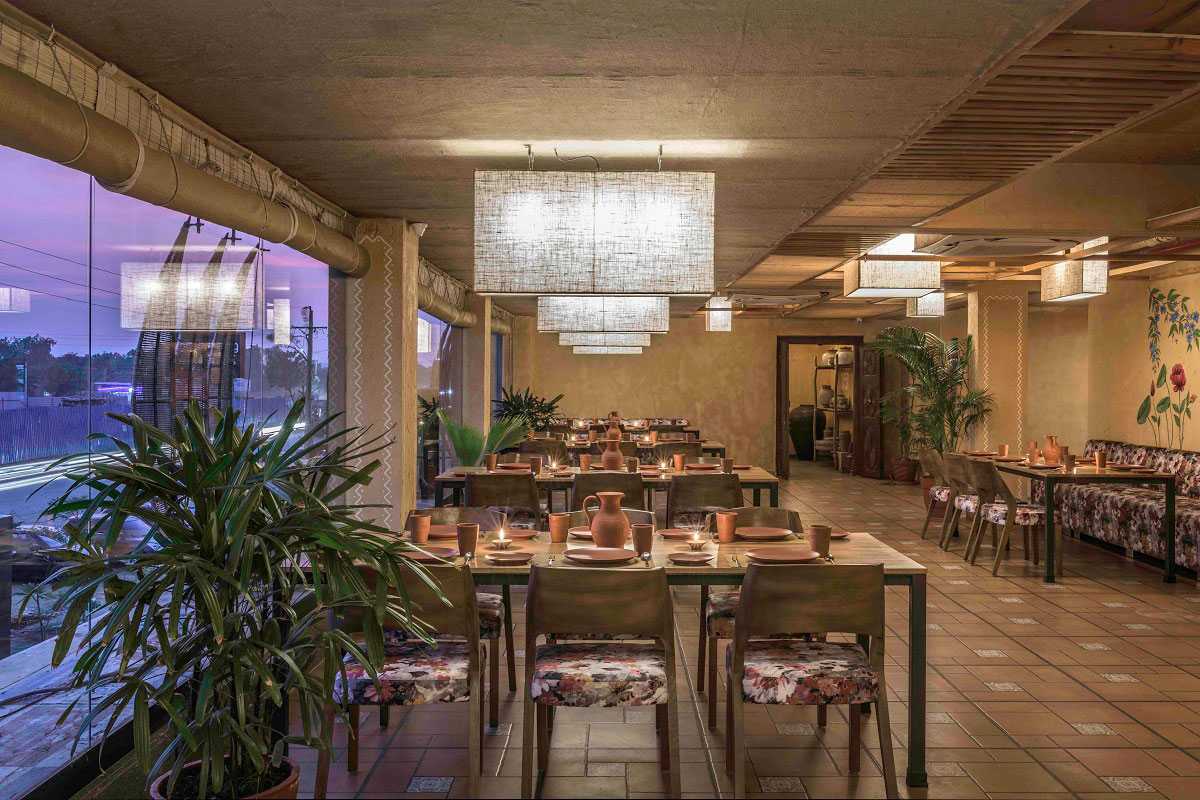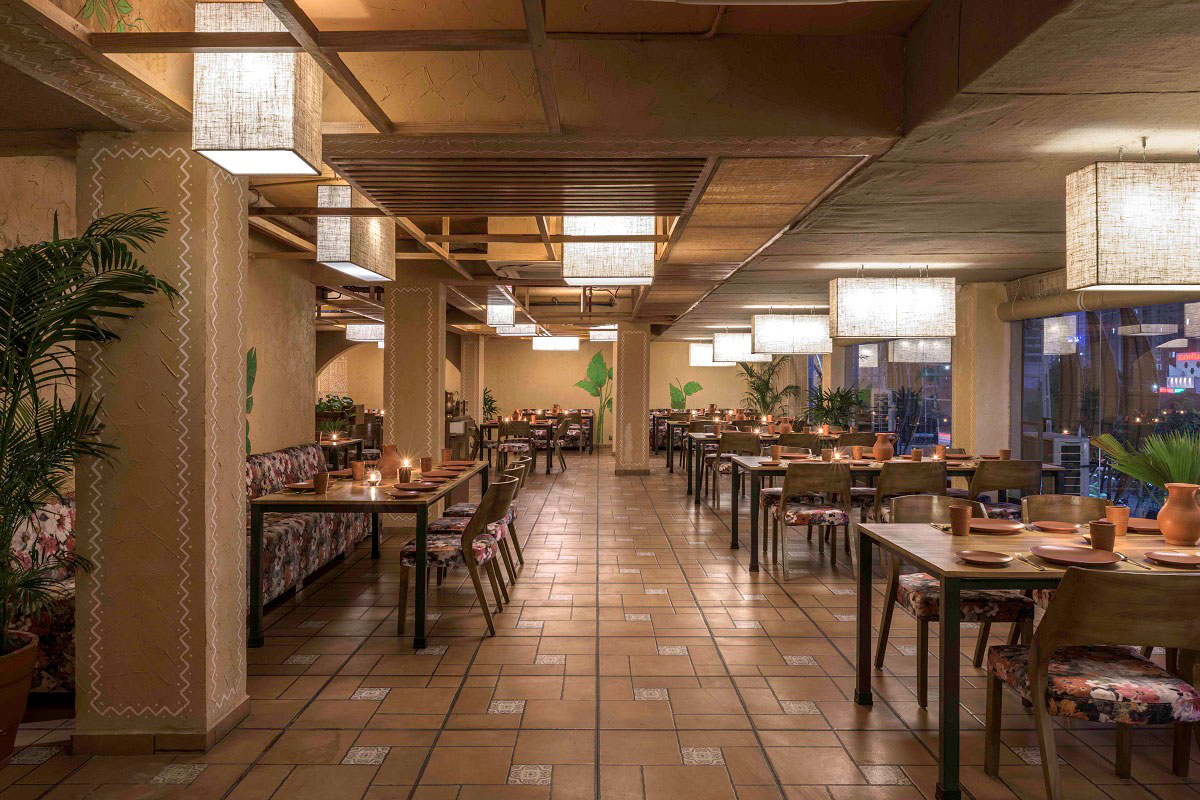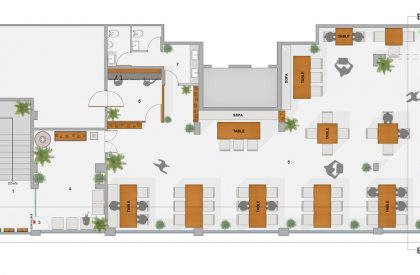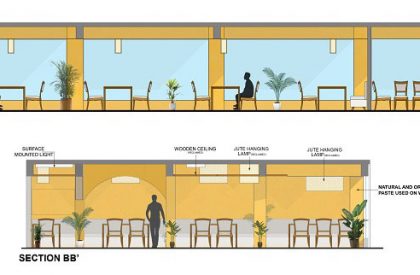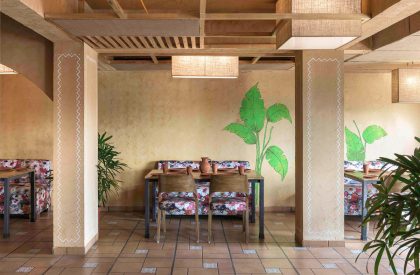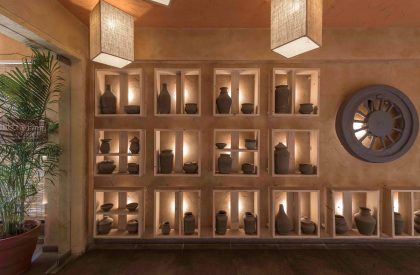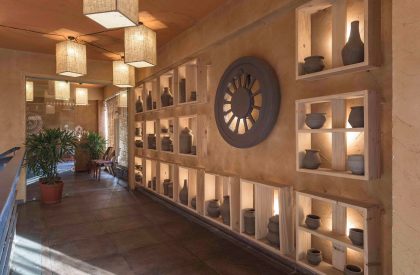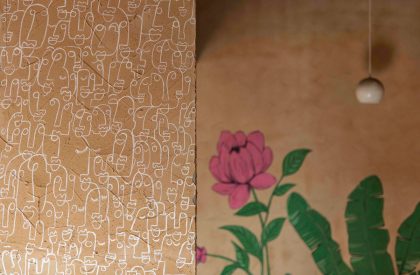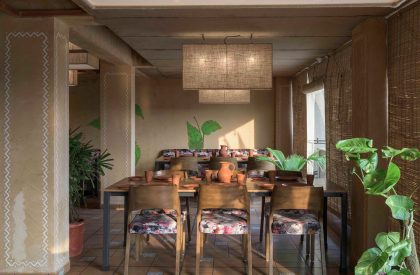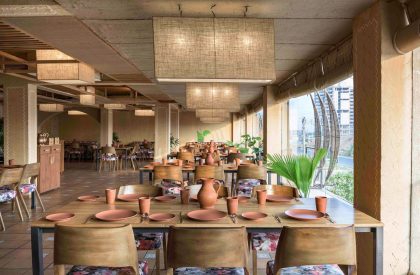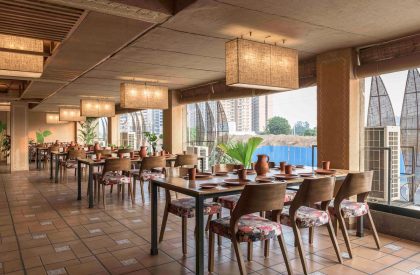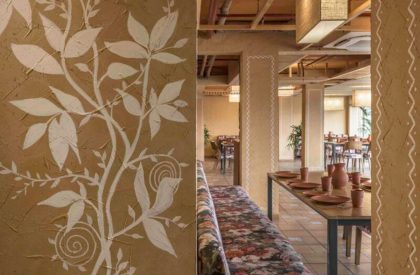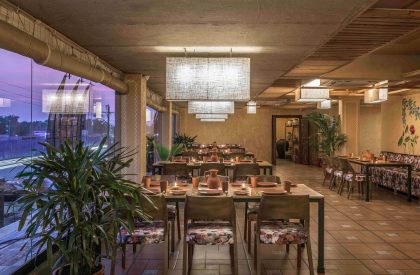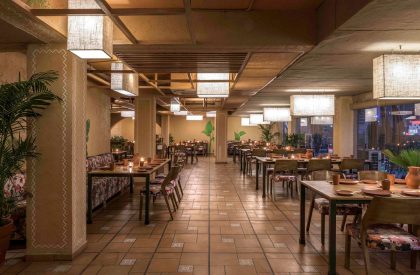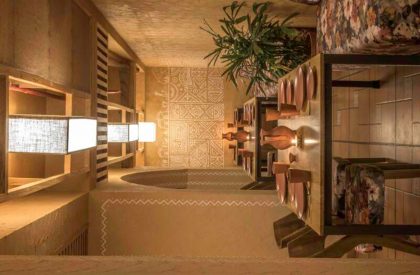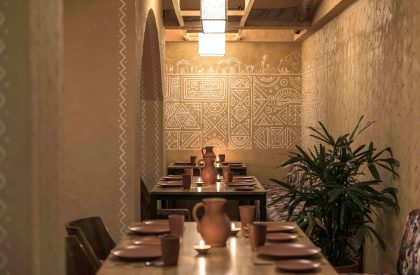Project Description
[Text submitted by architect] SUSTAINABLE, LOCAL CRAFT, TRADITION,VERNACULAR, LOCAL LABOUR, CLIENTS FAMLIY LINK TO POTTERY. Reducing carbon footprints
Reinforcing the intent through senses and objects
Lamps are designed and locally made from reclaimed jute
Furniture is designed from reclaimed wood and adds warmth to the ambience
Wall art and paintings have been done by local family artist
The ceiling is lined in reclaimed wood and jute panels (for acoustic purposes)
A specially customized jute screen is used to hide the AC compressor
The natural fragrance of the paste on the wall and ceiling increase your cravings for food
The natural illuminance is pure and real, and the colours and textures resonate with the theme and design core.
Earthen accessories and tableware — which contain natural goodness and possess their own health benefits — reinforce the idea of responsible design.
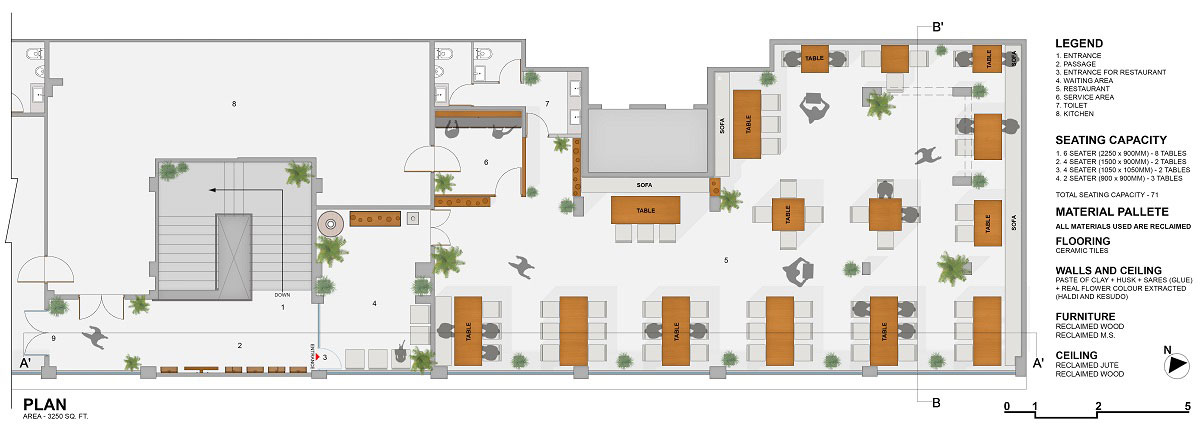

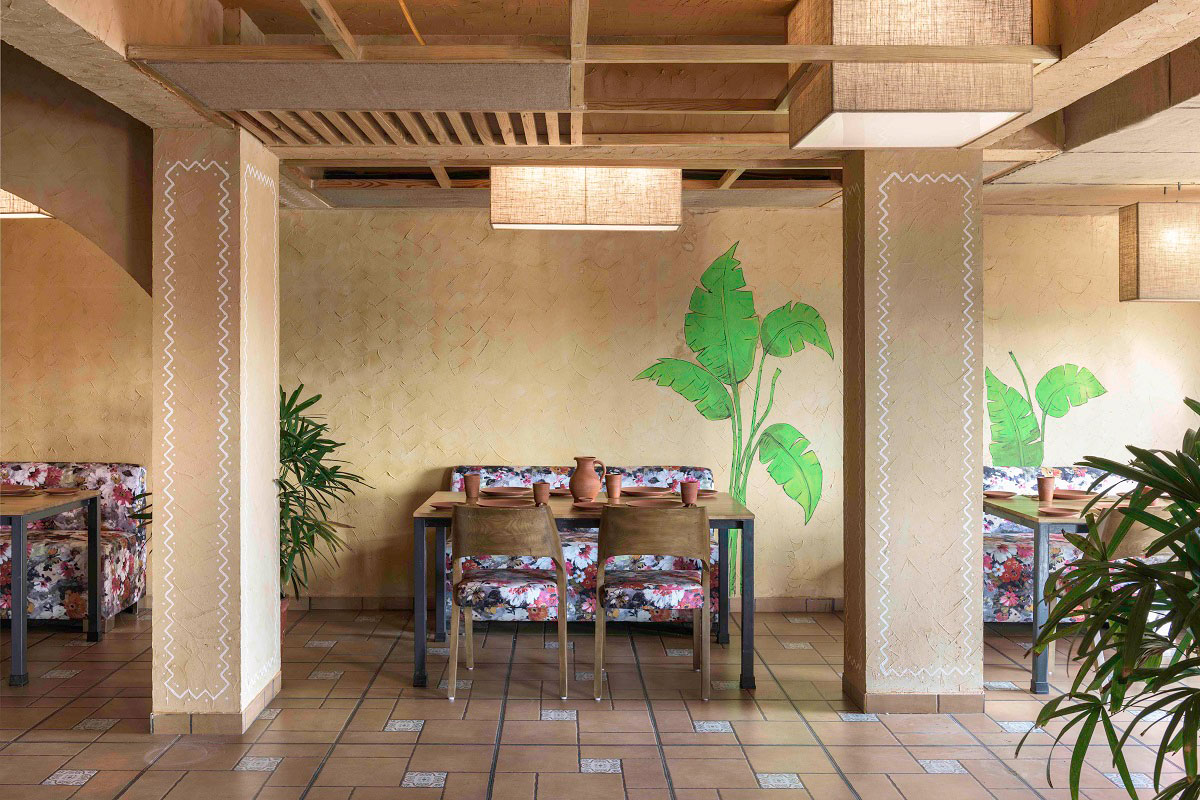
Materials
Reclaimed wood (ceiling and furniture)
Reclaimed jute (lamps and screens)
Natural organic paste (walls and ceiling)
Local ceramic tiles (floor)
The evocatively named Mitti ke Rang is a restaurant in Ahmedabad that facilitates the basic human need of socialising in an ambience that respects the earth. With the use of local organic materials — especially clay — local craft and labour, the project is an attempt on the architects’ part to acknowledge the consumerism of today’s world, and in a small way, contribute to minimising the waste generated by prevalent urban attitudes and lifestyles.

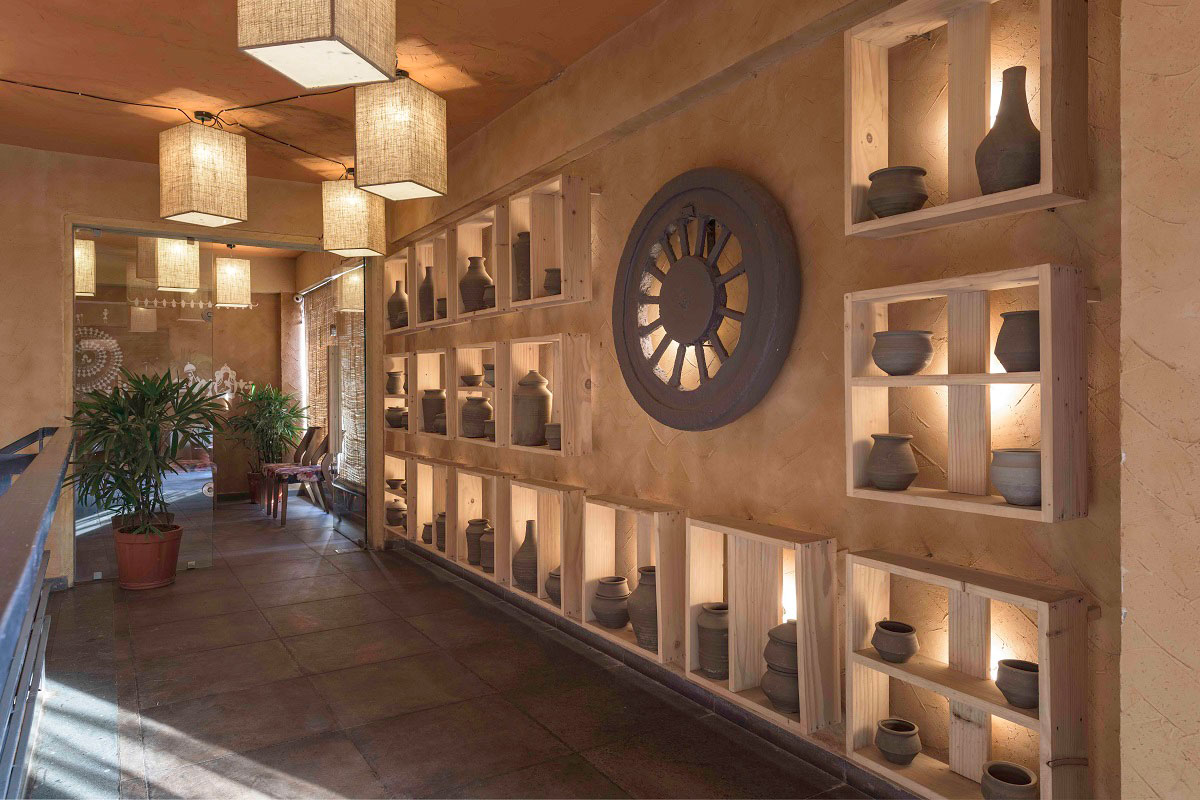

By a wonderful coincidence, the respectfulness towards resources and earth-energies that are the founding principles of The Grid Architects’ practice converged with the owners’ family links to pottery, and its inextricable connections to the earth. The attempt, then, became to build up this connection, heritage and talent in the new venture. “We told the client to let his family, who is still into this craft, use their talent, and, in turn, and we would use these various forms of the traditional vernacular material in the restaurant,” state the architects who are known to creating design that is both, high on environment-sensitivity and aesthetics. “This way, we could subtly but emphatically illustrate the family skill.” The weaving of vernacular and technology, and the collaboration and contribution of the local stakeholders in the family and the architects has resulted in spontaneity and diversity in the design.
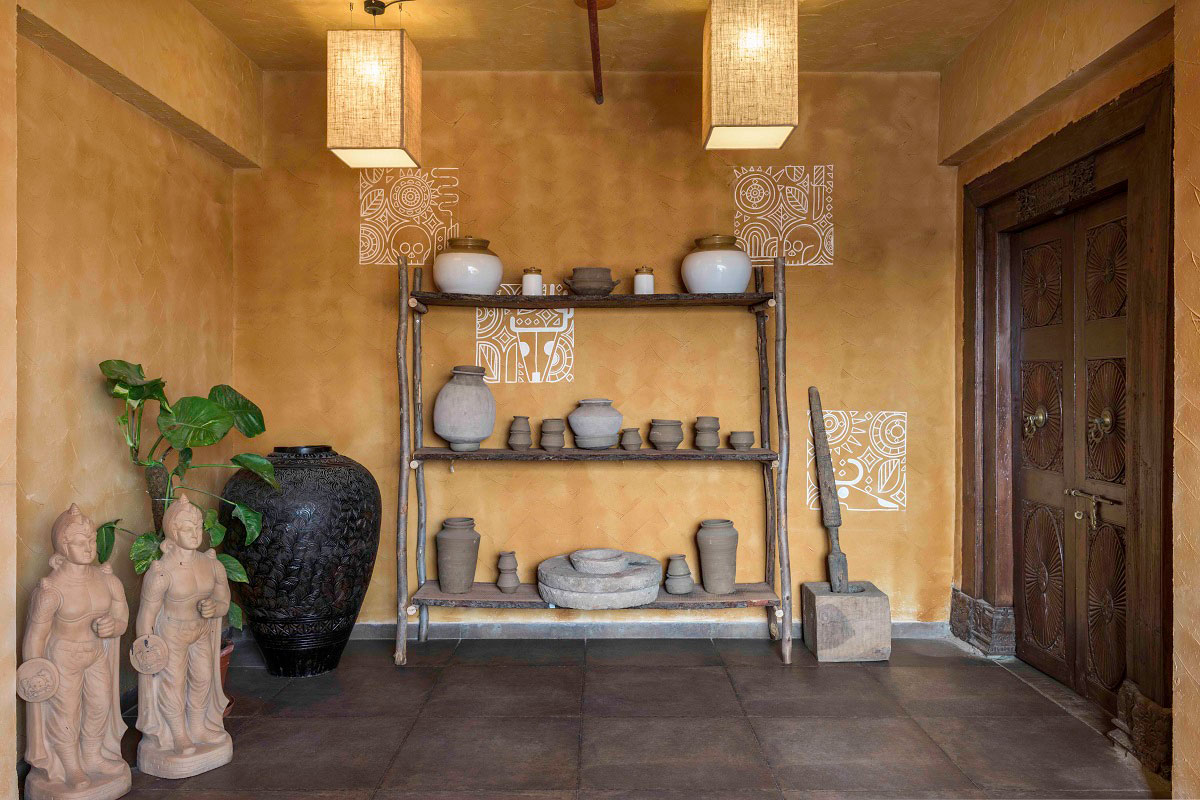
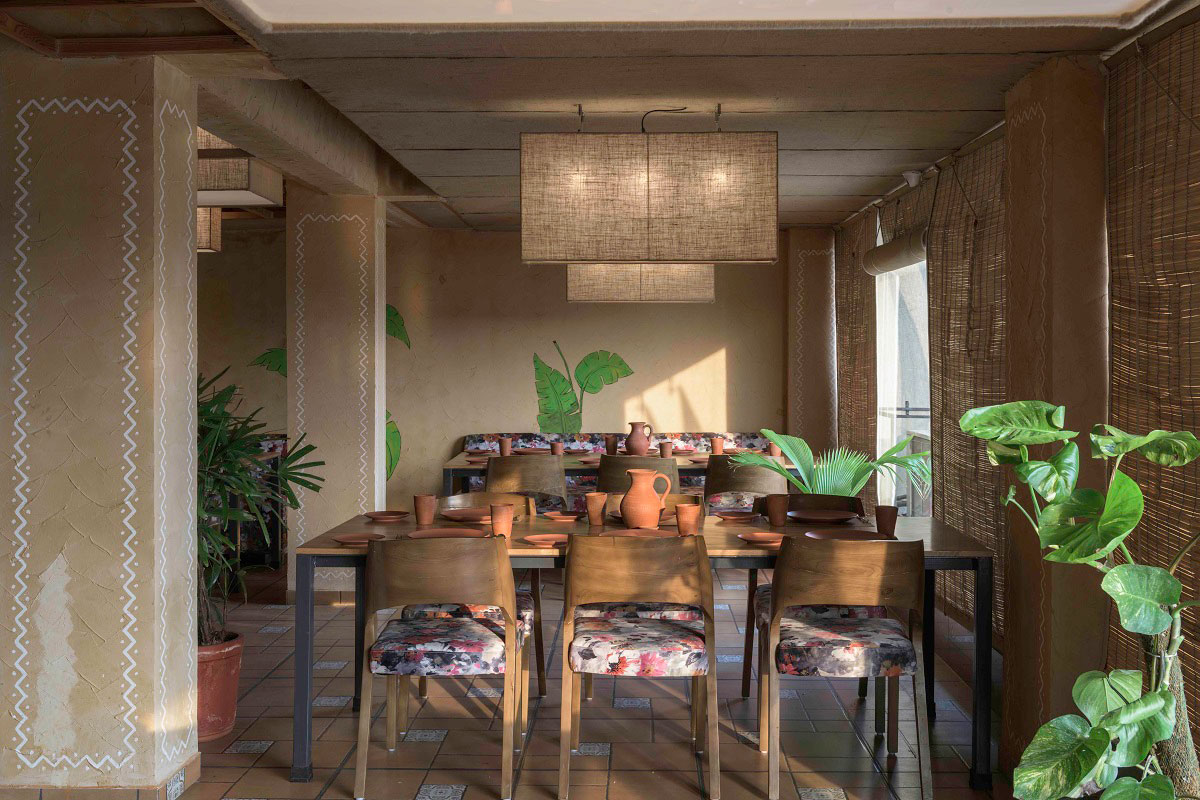

The hero of the entire narrative, undoubtedly, is clay. The mouldable, green and versatile material is explored both, as a medium of creating objects as well as surfaces. Its combination with dye extracted from the flower of the kesudo (flame of the forest) tree, turmeric, grain husk and a natural binder created a material distinct in colour and texture, one that resonates the theme and the spirit of the design. And thus, the name Mitti ke Rang. The material development and research were done on site, and the design team takes pride in the fact that no artificial pigment or additives were used in the process. Both, the colour and texture of this earth-friendly plaster celebrate India’s cultural wealth. The glorious golden shade, bearing associations with joy, health, positivity and happiness, evokes auspicious moments and festive occasions, especially in the Indian context. The texture of the surface, with its beautiful handcrafted look and wave-like designs that trace the rhythm of hand movements, recalls simpler times when our connections to nature and the environment were much stronger.
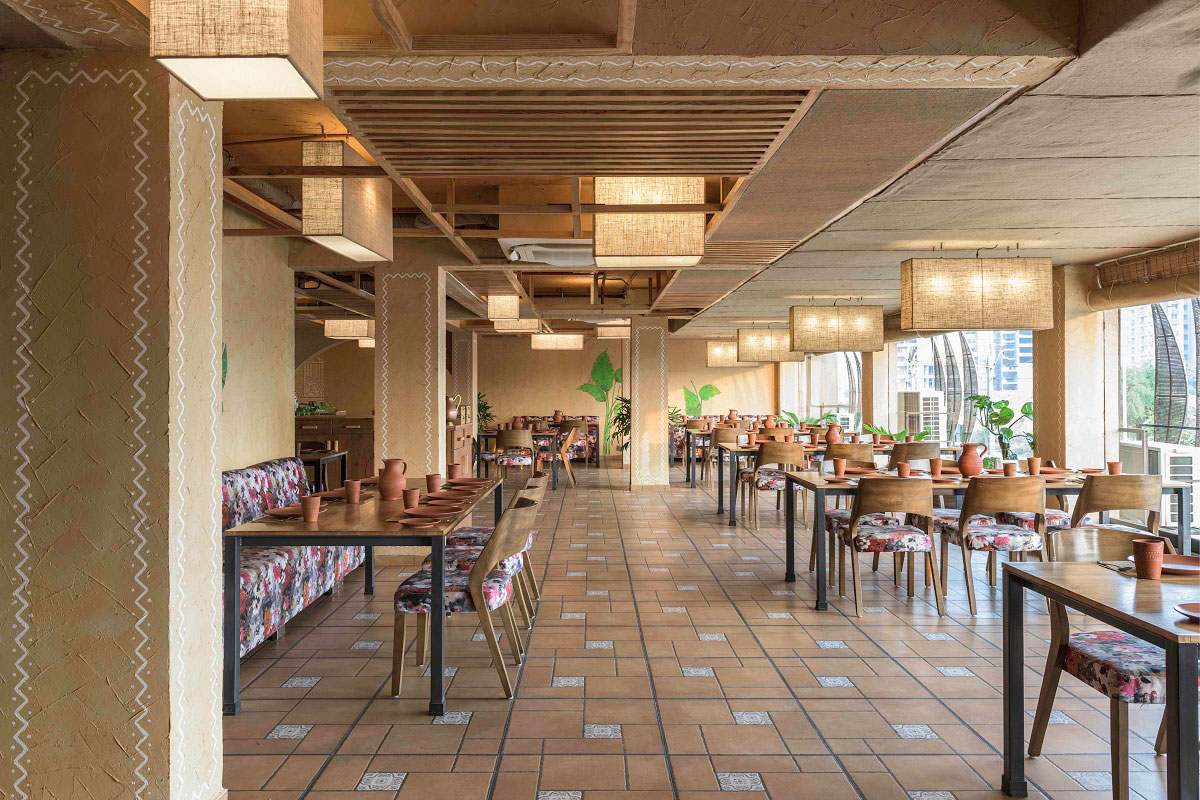
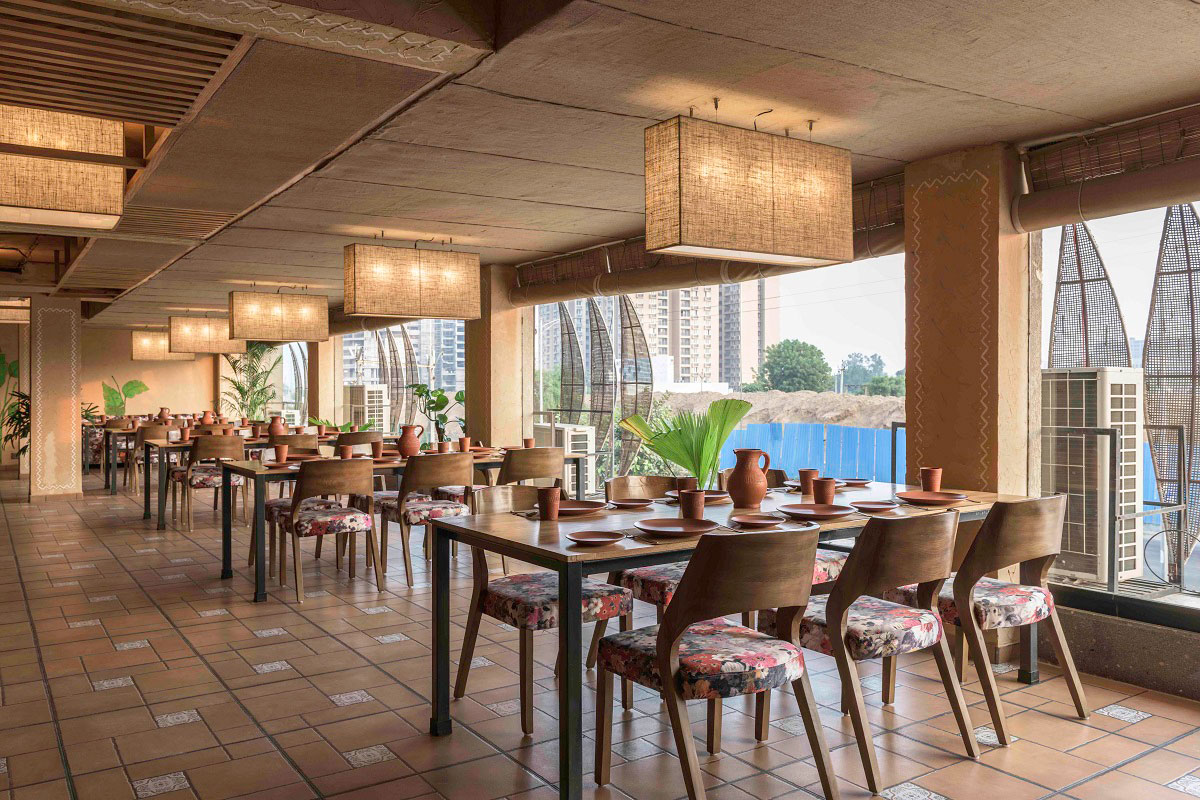
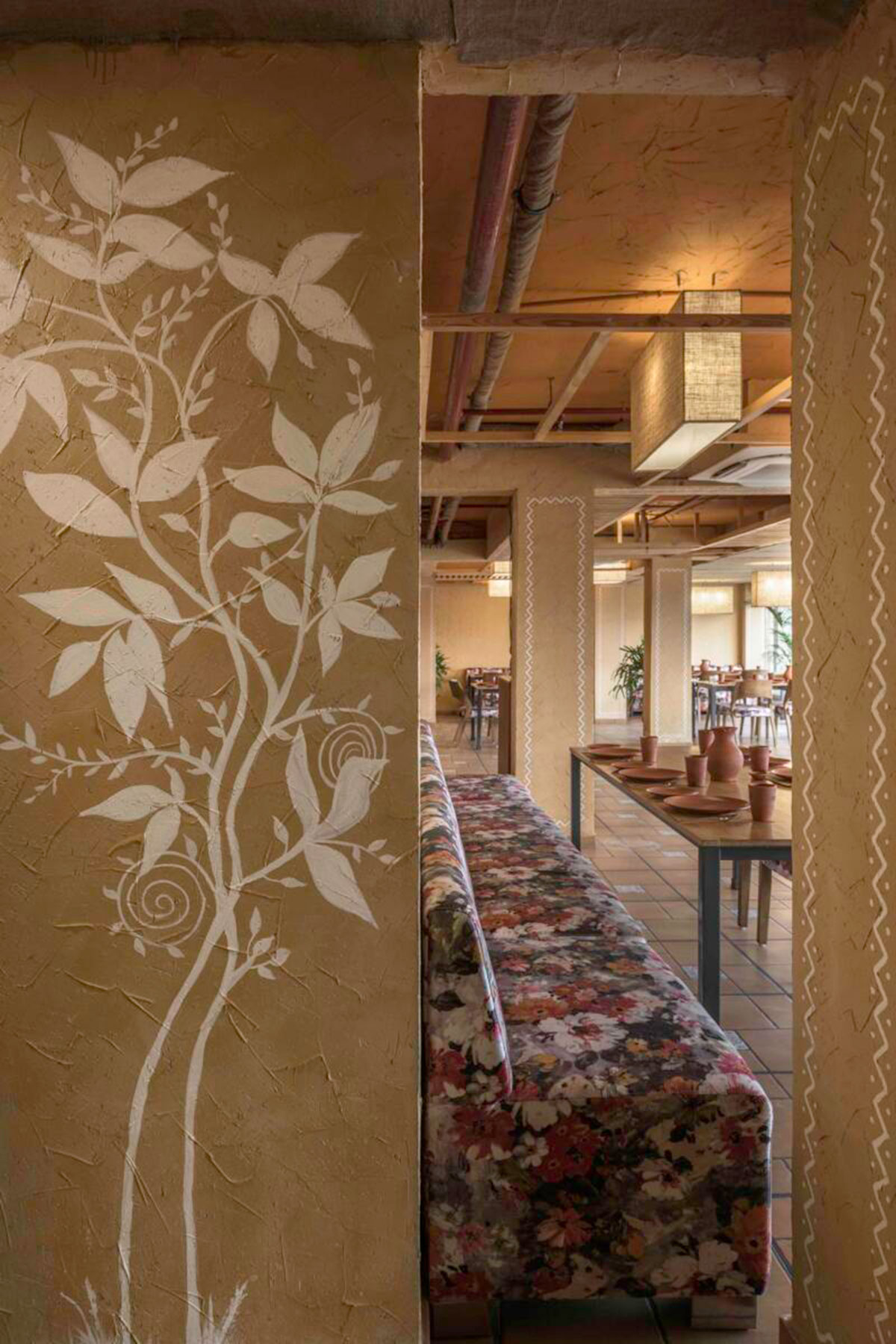
The expression of the central material is ably supported by reclaimed wood, reclaimed jute, unfired clay vessels and terracotta tableware. These make the spatial narrative richer and more enjoyable, and at the same time convey the commitment to build with a respect for the place we inhabit resulting in Low embodied energy. “Awareness is human quality,” states Bhadri Suthar, who co-helms the practice with her spouse. “But what you do with that awareness is important.” The design takes the route of simplicity, clean-lined forms and uncluttered interiors. “An effortlessness that arises from a true and honest approach,” says Snehal Suthar, co-founder and principal at The Grid Architects. The entrance symbolises the client’s heritage, our culture and the theme of the restaurant. A potter’s wheel and different types of clay vessels and utensils, gently illuminated by reclaimed jute-shaded lamps, extend a warm welcome. The waiting area and anteroom continues the tale of cultural legacy by showcasing objects from the client’s ancestral home — notably a hand pounder/grinder, and the white and green pots.
